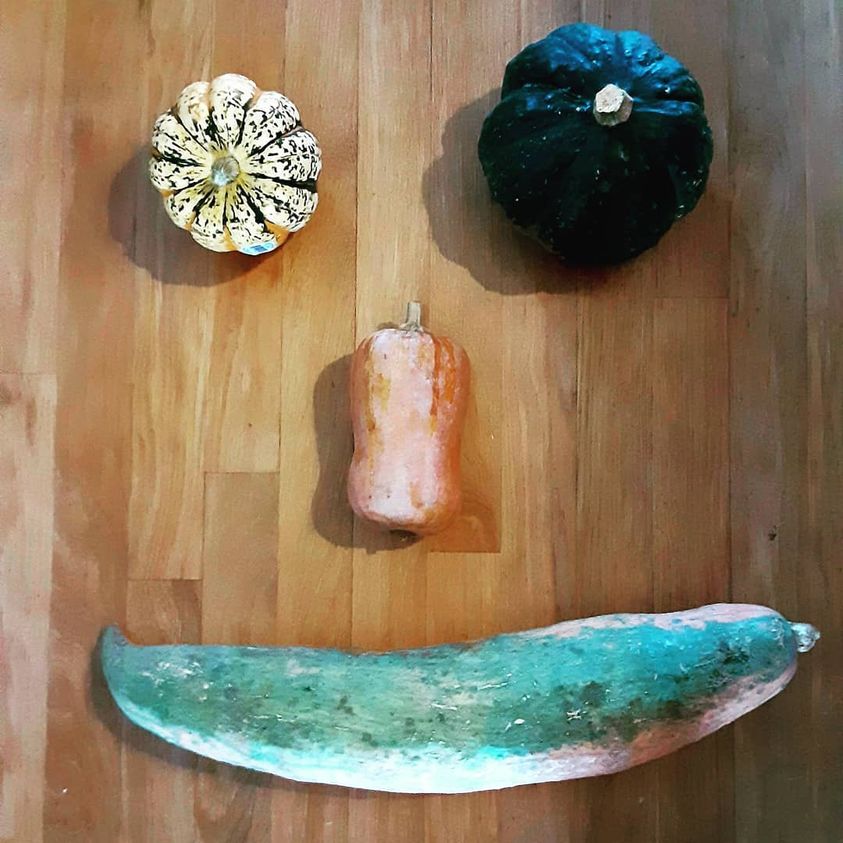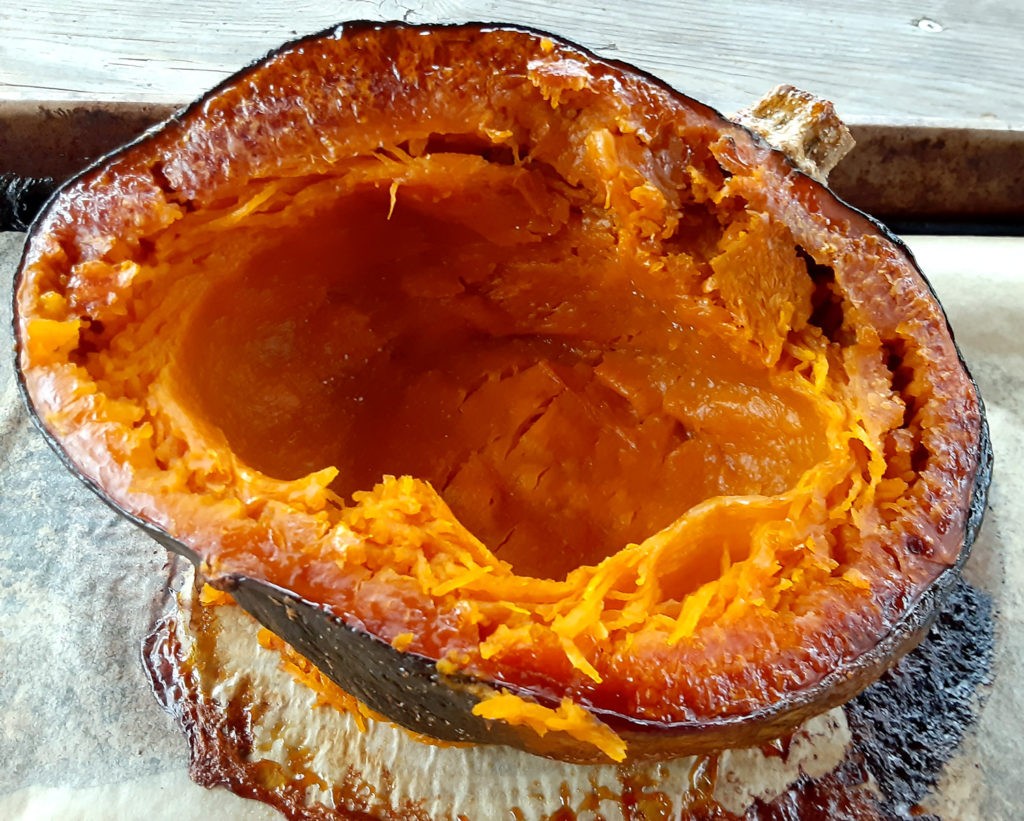Tetsukabuto squash, or tetsu squash for short, is an interesting creature indeed! In this post, I’ll explain the unique nature of this squash, share its history, and give links to a few cooking methods and tetsukabuto squash recipes.

What is a Tetsukabuto Squash?
Tetsukabuto squash is a hybrid, bred in Japan during the middle of last century. The translation of the Japanese name is “iron helmet,” after the famed hardness of the flesh and rind. It was bred to address insect and disease problems, and in fact it is a tough squash, high-yielding and resistant to many garden problems. My friend Dakota Rudloff-Eastman of River Ridge Farm and Market in Connecticut writes, “It’s just SO vigorous, and out produced our wildest expectations. Let’s just say it’s what we’re eating for winter.” It is also a champion in storage, regularly lasting six months or more and only getting better through winter and into spring.
When bred in the 1960’s, it was offered worldwide and, interestingly, took off in Brazil! Tetsu squash is, today, the most popular and widely known winter squash in Brazil, where in Portuguese it is called abobora japonesa, Japanese Squash. To find the largest range of tetsukabuto recipes, try this: search for the Portuguese name, abobora japonesa, or abobora cabotia, find a recipe that looks good, and translate it to English. For example, here’s a recipe for a whole squash stuffed with a cheesy shrimp mixture!
Tetsu squash is quite unusual: it’s an interspecific cross, meaning a hybrid of two different species. This is not the same as genetic engineering, as it is done by manual pollination of two parents, not by splicing genes in a laboratory. In fact this is a cross that could occur in nature if you were growing two squash species beside each other and conditions were just right. Many plants in nature arise from interspecific crossing.

The boysenberry is a human-created hybrid of three other species of berry. Again, boysenberries are not to be confused with GMO (genetically modified organisms). The work to create a tetsu squash, or a boysenberry, is not so different from traditional plant breeding. Friar Gregor Mendel did something very similar with sweet peas in this 19th centry, as we all learned in middle school.
Even animals can mate across species. The mule is a human-manipulated example. But there is a type of dolphin that arose naturally when two Atlantic dolphins of different species chose to mate however many eons ago.
Tetsu squash is a cross between Cucurbita moschata (the species that includes butternut squashes and others) and Cucurbita maxima (the species that includes kabocha squashes and others).
How Does Tetsukabuto Squash Grow? How Does it Taste?
Tetsu squash needs a lot of space to grow. The vines are very vigorous and productive. Most sellers, like Kitazawa Seed, will tell you that you need to grow Tetsu squash near to butternut or else a C. maxima type like buttercup or kabocha in order to ensure good pollination. Like most highly productive fruiting plants, keep Tetsukabuto well watered and apply plenty of nitrogen. It takes energy to fuel a productive machine, and a squash plant is no exception.
Johnny’s Seeds recommends storing Tetsu squash at least six weeks to allow the flavor to concentrate, before eating.
Tetsukabuto Squash Recipes

Testu squash is good prepared many ways. As a first try, I recommend baking it, cut in half, cut side down, as in my master recipe for baked squash. After that, you can:
– eat it as a side dish, with butter
– make cheesy squash grits
– make your favorite pumpkin bread or pumpkin pie recipe.
– wake up to some squash waffles, aka squaffles.
– warm up with a Bengali squash curry.
One big advocate for tetsu squash is the eatwintervegetables.com project, coordinated out of Oregon State University. Check out their range of creative, chef-driven recipes that offer tetsukabuto as one suggested option.
On a cold day like today, I might enjoy this squash stew recipe, featuring many warming spices, from the Farm to People website.
Feeling like a culinary challenge? Tetsu, like kabocha, would be classic in tempura. Try the James Beard Foundation’s recipe. But keep in mind that Tetsukabuto can be hard to peel. In fact, squash tempura is often served with the peel on. If you try this, make sure that your squash is not waxed, or use one that you grew yourself or bought directly from a farmer.
